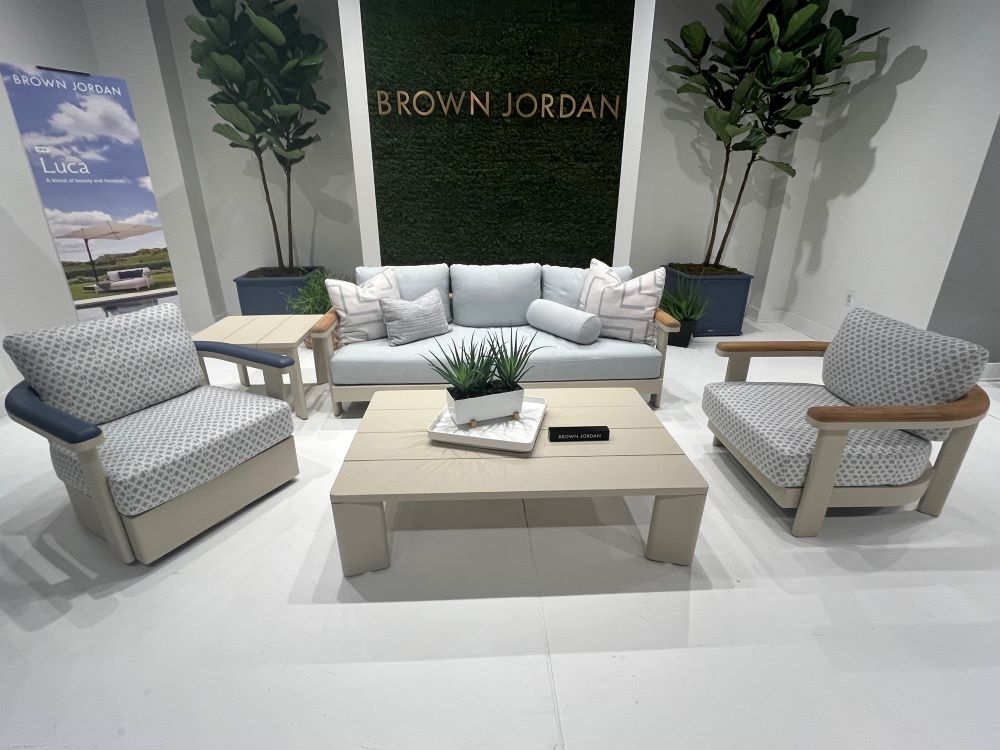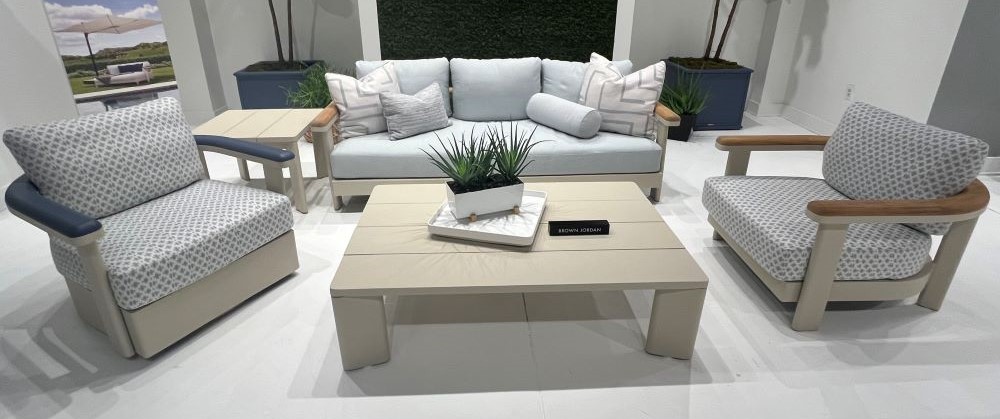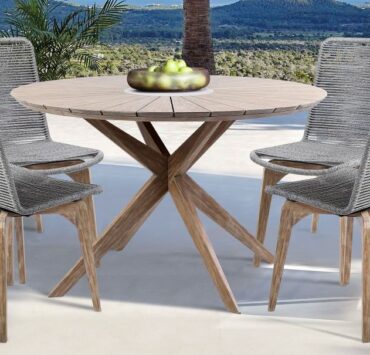At the fall High Point Market, I walked into the Brown Jordan showroom and stopped in my tracks, floored by the company’s entry vignette. The featured collection — Luca — felt like such a departure for Brown Jordan, in the best way.
Designed by longtime Brown Jordan collaborator Ann Marie Vering, Luca strikes a decidedly modern silhouette with U-shaped curved seat backs and mixed material frames in powder-coated aluminum with teak arms. And according to division President Ben Collins, Luca doesn’t look like your classic Brown Jordan collection for a reason.
“We’re fortunate to have a very loyal, mature audience, but for the younger generations, even if they can afford Brown Jordan, they may not know us if they’re not in the design industry,” he said. “A big part of that is product, so we tapped Ann Marie Vering to design some collections that are elegant and easy to understand.”
And that divergence from the tried-and-true for a brand as venerable and admired as Brown Jordan seems to be paying off. Collins says Luca is the most successful launch ever for Brown Jordan.
“We’re very proud of that,” he said. “And customers are really resonating with the mixed materials. We’re known for doing things with aluminum that others can’t really do, so to add in teak, this little touch of nature, it’s just a nice mix.”
A willingness to evolve has become more critical than ever. While we’ve been talking about millennials for more than a decade now, the members of that all-important generation are finally aging into income levels that allow them to make real investments in their homes.
Defined as being between 29 and 44 years old in 2025, many millennials have moved into a prime era of earning, meaning many of them have disposable income to invest in higher-end furnishings to replace the Ikea stuff they’ve made do with until they could afford better. According to a recent data analysis from the St. Louis Federal Reserve, millennials are now wealthier than previous generations were at their age, collectively worth about $15.95 trillion, up from $3.94 trillion five years ago.

Brown Jordan recognized that to reach those younger consumers, they needed to offer products that will appeal to their more contemporary style. With Luca, the company created a collection that’s still Brown Jordan, but with a fresh aesthetic that will appeal to a new generation of customers.
Collins also told me that with younger generations being more sun-conscious than those who came before them, the demand for loungers built for sunbathing has waned. In response, Brown Jordan scaled back on lounges in favor of larger seating while also rolling out a new shade program.
“People don’t lay out the way they did 10 or 15 years ago, so chaises and sun products are down-trending, with the exception of daybeds,” Collins said. “So we’re leaning into this longer seating and shade.”
These kinds of shifts are exactly what brands have to do to remain relevant and successful in today’s incredibly competitive marketplace. Brown Jordan didn’t completely overhaul their assortment. They didn’t change who they are and have been for 80 years. It would be disingenuous and disastrous to make such a drastic change.
Instead, they did what every brand must do to compete. They’re acknowledging that they need to evolve to meet today’s consumer’s expectations, rather than resting on their laurels and doing what has always worked. They’re making incremental changes that still feel on-brand, while also appealing to a customer who might not ordinarily seek out Brown Jordan. This is the kind of evolution that will serve the company — and any other brand willing to push the envelope just a bit — not only now, but for years to come.








